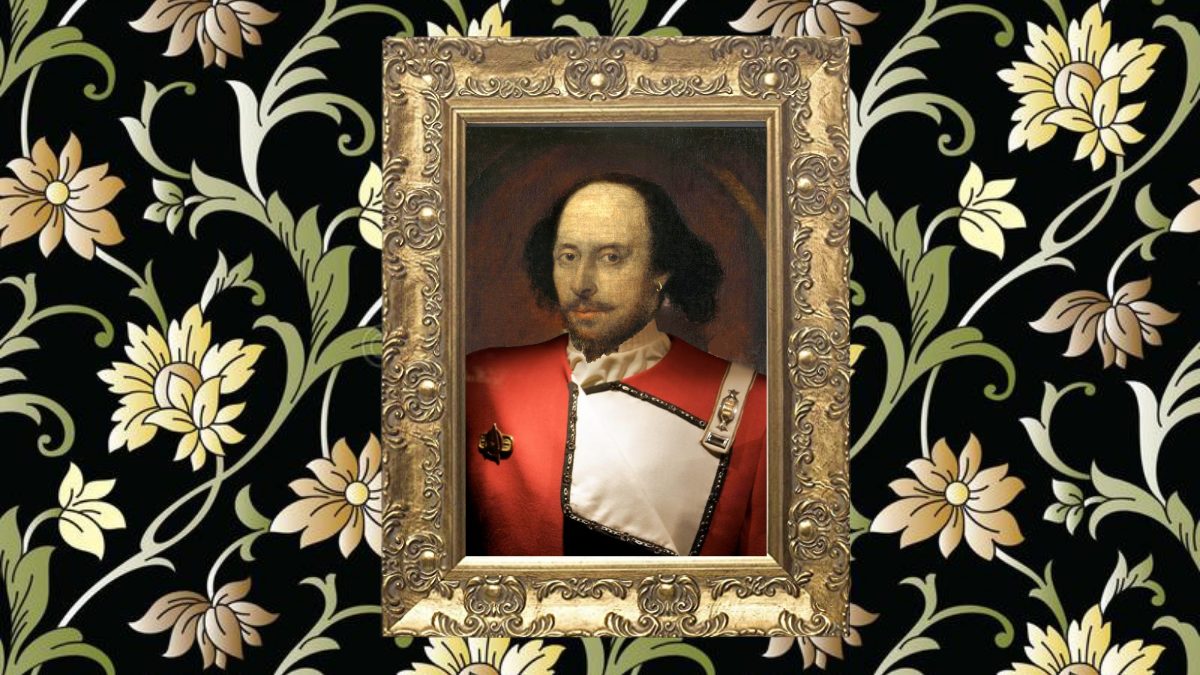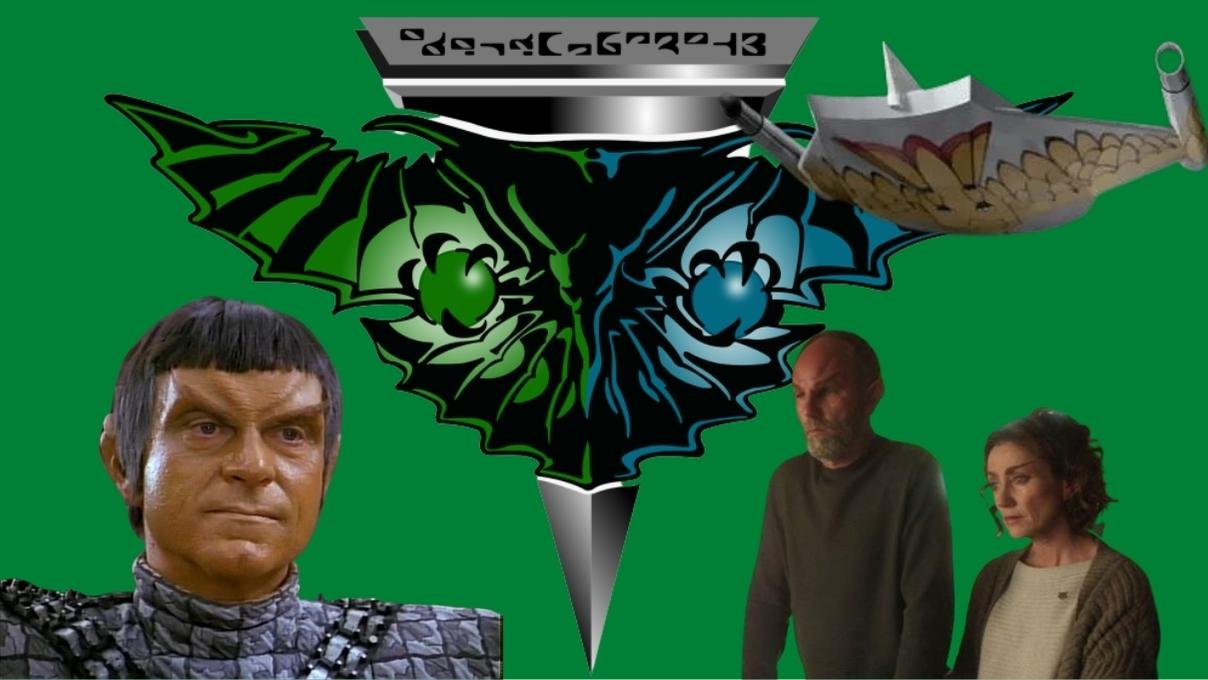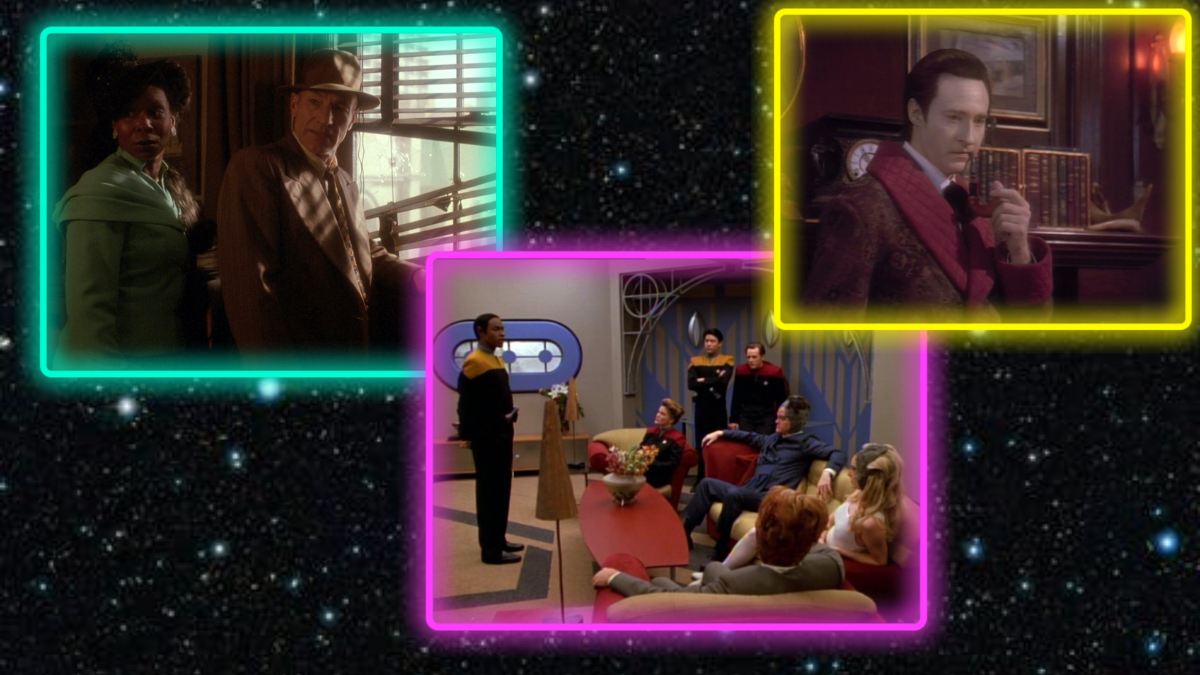T's Trek Trivia Tuesday: "Let's get this Bard-y started!"

APRIL 19, 2022 - William Shakespeare’s plays and poetry are celebrated throughout the world. The Bard was born in 1546, and, though we have no existing documentation of when, exactly, he was brought into the world, his birthday is celebrated annually on April 23. That’s because we do have documents that tell us he was baptized on April 26 and it was usual for a baby to undergo the ceremony three days after birth.
Shakespeare’s influence can be seen throughout Star Trek: in its themes, in its episode titles, even in its actors. Let’s see how much you know about that Bard of Stratford-upon-Avon, whose works sound better in the original Klingon than they do in Federation Standard. Put on your Elizabethan party hats and fill your mug to the brim with ale as we take a look at the ways in which Star Trek has used Shakespeare.
There are few stories told in the Western Hemisphere that don’t owe something to Shakespeare, even if it’s only minor. But there’s something about Shakespeare that particularly piques the interest of the writers of Star Trek. What is it that attracts, and has always attracted, Star Trek’s creative minds to the works of history’s best-known playwright? Jean-Luc Picard may have the answer.
At the beginning of the episode “The Defector,” Picard joins Data in the holodeck to coach him in his acting technique, using a scene from one of Shakespeare’s best-known histories, Henry V. In the scene, Data takes on the role of Henry as he disguises himself and walks among his troops to gauge their feelings.
This Shakespeare scene ties into the main story, perhaps better than in any other episode. The Enterprise takes on a Romulan defector with evidence that his people are intent on starting a war with the Federation. If Picard believes this defector, Jarok, then he must destroy a Romulan outpost set on invasion. If Jarok is lying, then Picard will be responsible for beginning a futile war. Henry faced a similar choice in beginning the Battle of Agincourt, but as Bates, one of Shakespeare's characters, says, “If his cause be wrong, our obedience to the king wipes the crime out of it.”
But it’s something Picard tells Data early on that goes to the heart of what many believe to be the reason Shakespeare and Star Trek go hand-in-hand.
Why does Picard recommend learning about Shakespeare to Data?
Holographic representations of Bates (S.A. Templeman) and Williams (Patrick Stewart) discuss the coming battle with Data as a disguised Henry (Brent Spiner) in “The Defector”
When he interrupts Data’s performance to compliment it, Picard says, “Data, you’re here to learn about the human condition and there is no better way of doing that than by embracing Shakespeare.” This sentiment echoes Gene Roddenberry’s. In his mind, Star Trek was always about the human condition. Even the many alien races encountered throughout the various series are a reflection in some way of us. Roddenberry and Shakespeare were both interested in exploring the same thing, which may be a reason why the works of Shakespeare so frequently find their way into Trek.
Picard had a strong interest in Shakespeare, reflecting Patrick Stewart’s own love of the Bard. In fact, during the run of Star Trek: The Next Generation, a copy of The Globe Illustrated Shakespeare was displayed in his Ready Room, sometimes replaced by The Annotated Shakespeare - Volume I.
The pages displayed changed from time to time, and they didn’t always reflect the theme of the episode. However, in the episode “The Battle,” the second to feature the Ferengi people, the displayed pages are clearly meant to comment on the episode itself.
What play had Picard been perusing before the episode began?
Jean-Luc Picard (Patrick Stewart) holds his beloved Shakespeare volume in “Hide and Q”
In the episode, Daimon Bok gives Picard’s old ship, the Stargazer, back to him at no charge, a very un-Ferengi thing to do! It all turns out to be a revenge plot against the captain, who Bok blames for his son’s death years earlier. It’s no coincidence, then, that Picard’s Shakespeare volume is open to a page of dialogue from The Merchant of Venice, with a full-page illustration facing it. Merchant tells the tale of the greedy Shylock, who demands a pound of flesh from Antonio, who has been unable to repay a debt to the moneylender.
The Ferengi, as conceived, were notoriously greedy, based on stereotypes like Shylock. It’s this coupled with the silliness of the aliens that prevented them from becoming the serious threat to the Federation that Gene Roddenberry and Herbert J. Wright originally envisioned. But more than that, in this episode (and “Bloodline,” in season seven) he is figuratively seeking his “pound of flesh” from Picard, payment for an imagined debt.
It has been said that Shakespeare’s The Tempest is probably the best fit in a science fiction context. In the play, a mysterious storm wrecks a ship on a lonesome island. There, the crew meets the magician Prospero, who created the storm himself in order to get revenge (one of Shakespeare’s favorite motifs) on the men who have robbed him of his wealth and position. All that stands between the shipwrecked men and death is Prospero’s lovely daughter, Miranda.
Star Trek: The Original Series borrows from this comedy twice. In “Is There In Truth No Beauty?” Diana Muldaur’s character is named Miranda, and Spock, when he takes on the consciousness of Kollos and lays eyes on Miranda for the very first time, says, “O brave new world that has such creatures in’t.” The line is a misquote, with Shakespeare citing “such people,” but Spock/Kollos is neither the first nor the last person to make the mistake.
What other TOS episode borrows from The Tempest?
A 1797 engraving of George Romney's painting depicting the shipwreck in "The Tempest" Act I, Scene 1, from a painting by Benjamin Smith
At the opening of “Requiem for Methuselah,” the Enterprise is in trouble. A deadly disease, Rigellian fever, is making its way through the ship, and the ingredients McCoy needs in order to synthesize a cure can only be found in time on one planet: Holberg 917-G. There, the away team meets a man named Flint, his ward Rayna and his robot M4. Flint holds a secret, though. It seems he’s thousands of years old, unable to die. He was Johannes Brahms, Leonardo da Vinci and many. many others. Given the fact that he has a Shakespeare First Folio, he was probably that august personage, as well. More than that, his character was firmly based on Prospero, Rayna’s on Miranda and M4, loosely, on the strange son of a witch, Caliban, all appearing in The Tempest.
Patrick Stewart and Armin Shimmerman are both Shakespeare experts and William Shatner has a background as a Shakespearean actor, as do most of the cast of Star Trek: Deep Space Nine. Avery Brooks has a firm foundation in the works of Shakespeare and even starred in a Shakespearean production as recently as 2005.
What was the play Brooks starred in, and what other Trek actor played the same role in a different production?
Benjamin Sisko (Avery Brooks) in command of Deep Space Nine
In 2005, Avery Brooks played Othello, the only Black man in an otherwise white cast, just as Shakespeare had intended. It was the Bard’s attempt to make a commentary on racial, ethnic and religious identity. Actually, it was the second time Brooks had played the role, the first being in 1990, and both productions took place at Washington DC’s Shakespeare Theatre Company.
in 1997, between those two productions, Shakespeare Theatre Company did something unique. They swapped the races in the play, and cast Captain Jean-Luc Picard himself, Patrick Stewart, in the titular role, surrounded by an otherwise Black and brown cast. It was a role Stewart had always wanted to play, and he jumped at the chance! The production was widely hailed as a triumph and London’s Globe Theatre eventually picked up the idea and mounted a similar production.
If you’re interested in learning more about Shakespeare and his works, there are lots of great resources online. A good place to start is the Folger Shakespeare Library. And if you find the thought of interpreting all the Elizabethan English a bit daunting, check out No Fear Shakespeare.
Happy birthday, Will!
T is the Managing Editor for Daily Star Trek News and a contributing writer for Sherlock Holmes Magazine and a Shakespeare nerd. He may have been the last professional Stage Manager to work with Leonard Nimoy, has worked Off-Broadway and regionally, and is the union Stage Manager for Legacy Theatre, where he is currently working with Julie Andrews. after which he’ll be working on Richard III at Elm Shakespeare Company.









